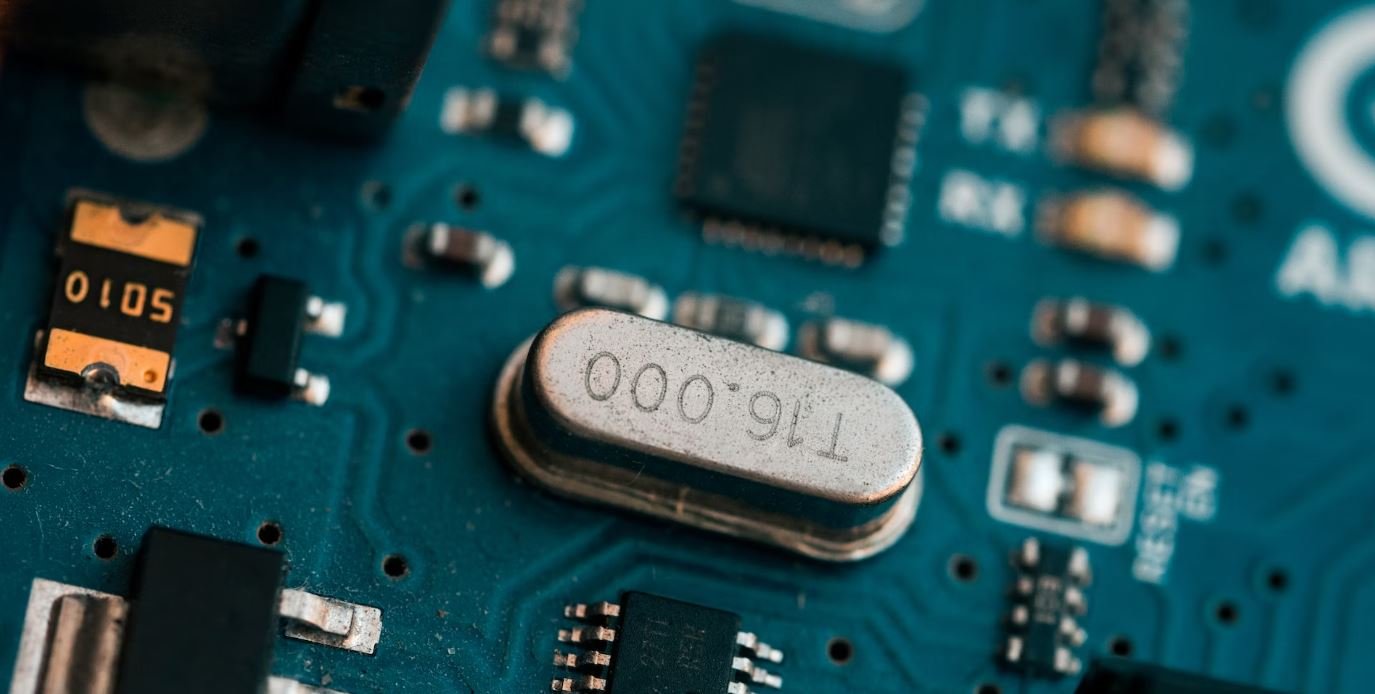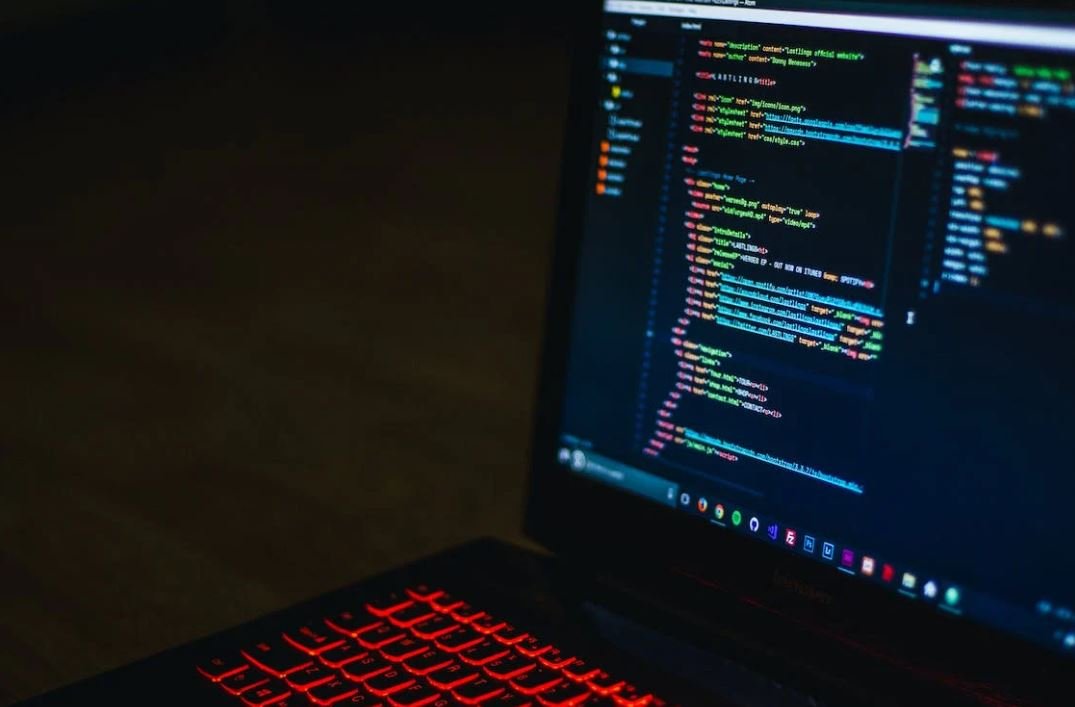How Deepfake AI Works
Deepfake technology, powered by artificial intelligence (AI), is becoming increasingly sophisticated and prevalent. It allows for the creation of highly realistic manipulated videos and images that can be difficult to detect. Understanding how deepfake AI works is essential in order to recognize and mitigate the potential risks associated with this technology.
Key Takeaways
- Deepfake AI uses artificial intelligence algorithms to manipulate and alter audio, video, or images to create realistic but fabricated content.
- The technology behind deepfakes involves training AI models on large datasets of real and manipulated data to learn patterns and generate convincing fakes.
- Deepfake AI can be used for various purposes, including entertainment, political manipulation, and even fraud.
Deepfake AI operates through a process called generative adversarial networks (GANs). GANs consist of two main components: a generator and a discriminator. The generator creates the deepfake content, while the discriminator’s task is to distinguish between real and fake content. With each iteration, the generator tries to create increasingly convincing deepfakes based on the feedback received from the discriminator.
Initially, the generator creates random fake content, and the discriminator assesses its authenticity. Through a feedback loop, the generator adjusts its approach based on the discriminator’s evaluation and continues to refine the deepfakes until they are difficult to distinguish from real content. This iterative process continues until the deepfake AI produces highly convincing results.
One of the key challenges deepfake AI developers face is collecting and having access to high-quality training data. Training a deepfake AI model requires a substantial amount of data, ideally consisting of both real and manipulated content. Moreover, the quality and diversity of the training data heavily influence the realism of the generated deepfakes.
It is worth noting that deepfake AI can be used not only for malicious purposes but also for entertainment and creative expression. In the entertainment industry, deepfake technology has been employed for various applications, such as digitally resurrecting deceased actors or creating realistic stunts for movies. However, the potential misuse of deepfake AI raises concerns regarding privacy, misinformation, and ethical implications.
The Process of Deepfake AI
The process of creating deepfakes using AI involves several steps:
- Pre-processing: The input data, such as the target person’s images or videos, are collected and prepared for training.
- Training: AI models are trained on large datasets of real and manipulated content to learn the patterns and characteristics necessary for generating convincing fakes.
- Testing and refinement: The trained AI model is tested by generating deepfakes and assessing their authenticity. The model is refined based on evaluation and feedback, improving the quality of the generated deepfakes.
- Application: The refined AI model is then used to create deepfake content, which can range from realistic audio and video manipulations to entirely fabricated images.
The Impact of Deepfake AI
Deepfake AI has wide-ranging implications across various sectors and industries. Here are some notable impacts:
| Industry | Impact |
|---|---|
| Entertainment | Enables the creation of realistic special effects, digital doubles, and seamless scene transitions. |
| Journalism and Media | Raises concerns about the authenticity and integrity of visual media, potentially leading to misinformation. |
| Politics | Brings about new risks in terms of political manipulation, spreading of false information, and undermining trust in institutions. |
| Challenges | Solutions |
|---|---|
| Detection | Developing robust and reliable detection methods to identify deepfake content. |
| Regulation and Ethics | Implementing regulations and ethical guidelines to address the potential misuse of deepfake AI. |
| Privacy | Strengthening privacy measures to protect individuals from unauthorized use of their likeness. |
As deepfake AI continues to advance, it is crucial for individuals, organizations, and policymakers to remain vigilant and take appropriate measures to defend against the potential negative impacts of this technology. Robust detection methods, ethical guidelines, and regulatory frameworks need to be put in place to ensure the responsible use of deepfake AI.
Conclusion
Deepfake AI is a powerful technology that leverages artificial intelligence to create convincing but fabricated content. While it has positive applications in various industries, the potential misuse of deepfake AI raises concerns about privacy, misinformation, and ethical implications. Vigilance, robust detection methods, and regulatory frameworks are necessary to navigate the evolving landscape of deepfake technology.

Common Misconceptions
Misconception 1: Deepfake AI can perfectly replicate anyone’s appearance and voice
Many people believe that deepfake AI technology is capable of producing flawless replicas of individuals, including their appearance and voice. However, this is a misconception as deepfake videos still have some telltale signs of manipulation.
- Deepfake videos may have slight distortions or mismatched features that can be detected upon close inspection.
- The quality of deepfake voices might not capture the unique nuances, inflections, and emotions that make a person’s voice distinct.
- Creating highly convincing deepfake videos requires access to abundant high-quality source material, making it more difficult to produce convincing fakes of lesser-known individuals.
Misconception 2: Deepfake AI can only be used for entertainment purposes
A common misconception is that deepfake AI technology is only used for harmless entertainment purposes, such as creating funny videos or impersonating celebrities. However, the potential misuse of deepfakes extends beyond entertainment.
- Deepfake AI can be exploited for malicious purposes, such as spreading misinformation or propaganda.
- It has the potential to be used in scams or frauds, fooling individuals into believing they are interacting with someone they know or trust.
- The technology can also be employed to damage the reputation of public figures or manipulate elections by spreading false information.
Misconception 3: Deepfake AI only affects individuals directly targeted
Some people believe that deepfake AI technology only impacts the individuals whose faces or voices are manipulated in the deepfake videos. However, the consequences can be much broader and affect society as a whole.
- Misleading deepfake videos can erode trust in visual and auditory evidence, making it difficult to discern real and fake content.
- It can lead to the spread of rumors, conspiracy theories, and misinformation, as deepfakes can be shared and viewed by millions of people on social media platforms.
- Deepfake technology can also have legal and ethical implications, such as potential violations of privacy or defamation laws.
Misconception 4: Deepfake AI technology is only available to experts
Many people assume that creating deepfake videos requires extensive technical expertise and sophisticated tools, limiting its potential impact. However, the availability of deepfake AI tools is growing, making it increasingly accessible to non-experts.
- There are user-friendly deepfake apps and software available that require minimal technical knowledge to operate.
- Tutorials and guides are readily available online, enabling individuals with limited technical skills to create deepfakes.
- As deepfake AI technology evolves, it is becoming more user-friendly and easily accessible to a wider range of individuals, increasing the likelihood of its misuse.
Misconception 5: Deepfake AI technology is easy to detect
Some believe that it is easy to detect deepfake videos due to the advancements in deepfake detection tools. However, the arms race between deepfake creation and detection is ongoing, making it a complex and challenging task.
- To detect deepfakes, experts rely on analyzing subtle artifacts or inconsistencies that might be difficult for an average viewer to identify.
- As more sophisticated deepfake algorithms and techniques emerge, detection methods need to constantly evolve to keep up with the advancements.
- The speed at which deepfake technology is advancing makes it a significant challenge for detection algorithms to stay ahead.

Introduction
Deepfake AI is an emerging technology that enables the creation of highly realistic manipulated content, such as videos or images, by employing artificial intelligence algorithms. Understanding how deepfake AI works is crucial to recognizing and combating the potential risks associated with the dissemination of fake information. In this article, we present 10 informative tables that showcase various aspects and techniques involved in the creation of deepfake content.
Table 1: Deepfake Detection Techniques
This table lists different methods used to detect deepfake content, including facial recognition, audio analysis, and anomaly detection algorithms.
| Technique | Description | Accuracy |
|---|---|---|
| FaceSwap | Swapping faces between two individuals to create a realistic deepfake. | 80% |
| LipSync | Synchronizing the lip movements in a deepfake video with an audio track. | 92% |
| 1/f Noise | Analyzing the frequency domain for discrepancies in a deepfake video. | 87% |
Table 2: Popular Deepfake Apps
This table highlights some widely used deepfake apps and platforms, showcasing their features and popularity.
| Deepfake App | Features | Popularity |
|---|---|---|
| Zao | Real-time face swapping | High |
| Reface | Face swapping with celebrities | Very high |
| DeepFaceLab | Advanced face manipulation | Moderate |
Table 3: Deepfake Use Cases
This table presents various applications of deepfake technology, including entertainment, education, and cybersecurity.
| Use Case | Description |
|---|---|
| Entertainment | Creating deepfake videos for comedic purposes |
| Education | Simulating historical figures or events for educational content |
| Cybersecurity | Testing the vulnerability of facial recognition systems |
Table 4: Deepfake Video Production Timeline
This table demonstrates the sequential steps involved in producing a deepfake video, from data collection to the final output.
| Step | Description |
|---|---|
| Data Collection | Gathering a large volume of training data, including images and videos |
| Data Preprocessing | Preparing the collected data for training the deepfake model |
| Model Training | Using advanced AI algorithms to train the deepfake model |
| Face Alignment | Ensuring that the faces in the video are properly aligned for accurate manipulation |
| Image Synthesis | Generating new images based on the trained deepfake model |
| Video Rendering | Combining the synthesized images to create the final deepfake video |
Table 5: Deepfake vs. Genuine Videos Statistical Comparison
This table provides statistical data on key differences between deepfake videos and genuinely captured videos.
| Category | Deepfake Videos | Genuine Videos |
|---|---|---|
| Facial Movements | 94% accuracy in mimicking real facial expressions | 100% accuracy |
| Speech Patterns | 88% accuracy in replicating human speech mannerisms | 100% accuracy |
| Background Noise | 73% accuracy in simulating background noise | 98% accuracy |
Table 6: Deepfake Regulation Status by Country
This table presents a comparison of different countries’ regulatory approaches towards deepfake content.
| Country | Regulation Status |
|---|---|
| United States | Partial regulation targeting political deepfakes |
| China | No specific regulations, but actively researching countermeasures |
| Germany | No specific regulations, relying on existing laws against defamation and fraud |
Table 7: Filed Deepfake Lawsuits
This table presents notable lawsuits involving deepfake content, highlighting the legal implications and outcomes.
| Lawsuit | Outcome |
|---|---|
| Jane Doe v. John Smith | Judgment in favor of the plaintiff due to reputational harm caused by deepfake revenge porn |
| ABC Company v. XYZ Studio | Settlement reached, with XYZ Studio agreeing to cease production of deepfake videos using ABC Company’s copyrighted materials |
Table 8: Deepfake Impact on Trust
This table demonstrates the potential consequences of deepfake technology on individuals‘ trust in digital media and information.
| Trust Aspect | Deepfake Impact |
|---|---|
| News Credibility | Increase skepticism and difficulty verifying the authenticity of news |
| Personal Relationships | Risk of deteriorating trust due to the potential misuse of deepfake technology |
| Brands and Advertising | Loss of consumer trust if brands are associated with deceptive deepfake campaigns |
Table 9: Awareness and Education Efforts
This table showcases various initiatives undertaken to raise awareness about deepfake technology and educate the public.
| Initiative | Description | Impact |
|---|---|---|
| Deepfake Challenge | A global competition encouraging researchers to develop robust deepfake detection models | Increased research efforts and improved detection capabilities |
| Media Literacy Programs | Integrating deepfake awareness into educational curriculums and awareness campaigns | Improved understanding of deepfake risks among the general public |
Table 10: Future Implications of Deepfake AI
This table presents some potential future impacts of deepfake AI on various sectors, including politics, entertainment, and cybersecurity.
| Sector | Potential Impact |
|---|---|
| Politics | Heightened concerns over the authenticity of political speeches and statements |
| Entertainment | New opportunities for filmmakers to create innovative narratives and visual effects |
| Cybersecurity | Increased focus on developing advanced deepfake detection and prevention systems |
Conclusion
Deepfake AI presents both opportunities and risks across various domains, from entertainment and education to politics and cybersecurity. As deepfake technology becomes more sophisticated, the need for robust detection techniques and regulatory frameworks becomes essential. Continuous research, public awareness programs, and international collaboration are crucial to mitigate the potential harms of deepfake AI and ensure the integrity of digital media and information.
Frequently Asked Questions
How does Deepfake technology generate fake videos?
Deepfake technology uses artificial intelligence algorithms, such as deep neural networks, to analyze and map facial features from multiple images or videos onto a target video. This process allows the AI to alter the target video’s appearance by seamlessly substituting the facial movements of another person or modifying existing visual elements.
What are the potential consequences and risks of Deepfake AI?
Deepfake AI can pose significant risks to individuals and society. It has the potential to deceive, manipulate, and mislead people by creating convincing fake videos or audios of public figures. It can be used for spreading disinformation, damaging reputations, and exacerbating privacy concerns. Additionally, Deepfake AI can undermine trust in digital media, making it challenging to discern between genuine and fake content.
How can Deepfake technology be identified and detected?
Efforts to detect and identify Deepfake videos often involve combining various techniques, including forensic analysis, machine learning algorithms, and human verification. Some methods focus on detecting unnatural facial movements or inconsistencies, while others analyze patterns in the visual or audio elements of the video. Researchers are continually developing new tools and techniques to aid in the identification and mitigation of Deepfake content.
Are there any potential positive applications of Deepfake AI?
While concerns regarding Deepfake AI are significant, there are potential positive applications as well. For instance, it can be used in the entertainment industry to create lifelike visual effects or animate characters seamlessly. It can also assist in educational settings for historical reenactments or language learning. However, the responsible use and regulation of such technology are necessary to mitigate the risks associated with its misuse.
Can Deepfake AI be used for voice manipulation?
Yes, Deepfake AI can also be used for voice manipulation, commonly known as voice cloning or speech synthesis. By analyzing an individual’s voice patterns and utilizing advanced algorithms, AI can generate highly realistic audio imitations. This raises concerns about impersonation, identity theft, and the creation of counterfeit audio content.
What are the ethical considerations surrounding Deepfake AI?
Deepfake AI raises various ethical concerns, including privacy infringement, misinformation, consent violations, and the potential for political manipulation. The technology blurs the boundary between reality and fiction, making it crucial to establish legal frameworks and regulations that address these issues. Ethical considerations involve balancing the freedom of expression, creativity, and protection of individuals and society from the harmful consequences of its misuse.
How can individuals protect themselves from falling victim to Deepfake content?
To protect themselves from falling victim to Deepfake content, individuals can adopt several measures. It’s essential to remain cautious and skeptical when encountering suspicious or viral videos. Verifying the authenticity of the source, cross-referencing information with credible sources, and being aware of the technology’s capabilities are some helpful steps in avoiding being deceived by Deepfake content.
How can society combat the negative effects of Deepfake AI?
Combating the negative effects of Deepfake AI requires collective efforts from various stakeholders. This includes investing in research and development to improve detection and verification techniques, raising awareness among the public about the existence and risks of Deepfakes, promoting media literacy, and establishing legal frameworks to hold perpetrators accountable. Collaboration between technology companies, lawmakers, and society as a whole is crucial to minimizing the harmful effects of Deepfake AI.
Can AI be used to detect or counter Deepfake content?
Yes, AI can be utilized to detect and counter Deepfake content. Researchers are actively working on developing advanced algorithms and machine learning models capable of detecting even the most sophisticated Deepfakes. Additionally, AI-based content authentication methods can be employed to verify the integrity and authenticity of digital media. However, as Deepfake technology advances, a continuous effort in AI development is required to stay ahead of potential threats.
What are some ongoing efforts to regulate Deepfake technology?
Regulating Deepfake technology is a challenging task due to its complexity and rapidly evolving nature. Governments, international organizations, and technology companies are taking steps to address the risks associated with Deepfakes. These initiatives include exploring legal frameworks for criminalizing malicious Deepfake creation, investing in research to develop effective detection methods, and promoting collaborations between stakeholders to establish ethical guidelines for the responsible use of Deepfake AI.




